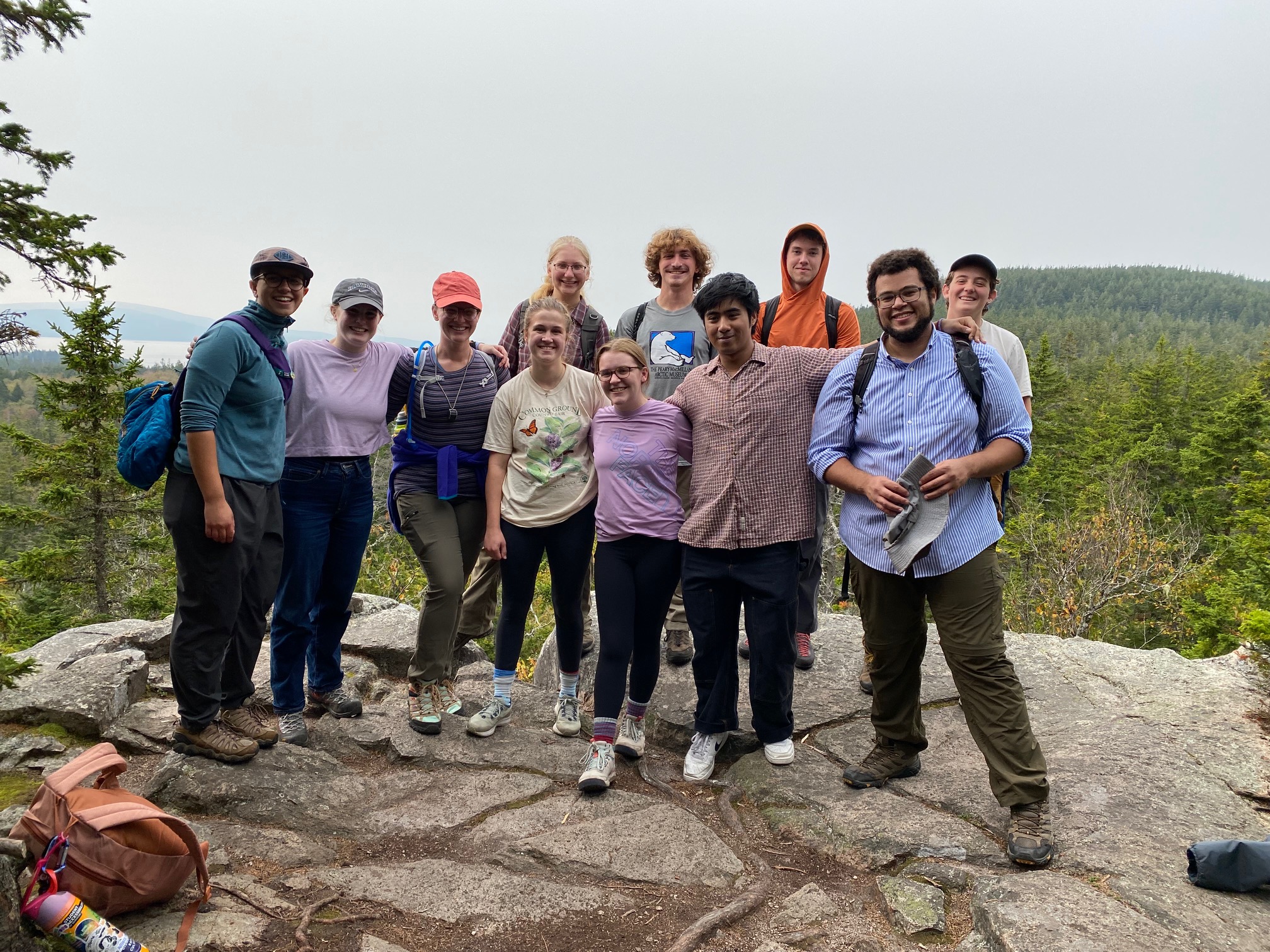EOS Adventures to the Schoodic Peninsula
By Chelsea Moody '25In late September, students and faculty in the Department of Earth and Oceanographic Science (EOS) had an opportunity to spend a geology-filled weekend on the Schoodic Peninsula in Acadia National Park. The trip emphasized using classroom knowledge and field observation skills as students worked to piece together Schoodic’s geologic history.

Participants departed on Friday afternoon for a scenic drive up to Acadia and the Schoodic Institute. The group consisted of members from every class year and a variety of majors and minors currently enrolled in EOS courses. They spent the evening preparing for fieldwork and playing a spirited game of Taboo.
On Saturday morning, the group headed to Schoodic Point for their first round of field work. Students were asked to make observations of anything they found interesting, from rock types to mineral grain sizes. The group was particularly interested in mafic intrusions found within the granite bedrock on the Point. Granite is felsic, meaning that it crystallizes from mainly silicate minerals like quartz and feldspars, and is usually a light color. Conversely, mafic rock is rich in minerals with magnesium and iron and is dark in color. The mafic intrusions within the rock were formed as magma from below Earth’s surface, burst upward and found space in the granite to cool and crystallize. The stark color contrast between Schoodic’s light granite and dark mafic intrusions caught students’ eyes all weekend. Using Brunton compasses and hand lenses, students measured the angle and orientation of these intrusions and examined individual mineral grains of the surrounding granite.
Schoodic’s geologic story was further uncovered by examining glacial striations on the granite and learning about the massive amounts of ice that covered Maine thousands of years ago in the time of the Laurentide Ice Sheet. The Laurentide Ice Sheet retreated from Maine’s coast about thirteen to fourteen thousand years ago and weighed billions of tons, exerting a massive amount of pressure and force on the ground below it. As the ice sheet moved away from the coast, it picked up boulders, rocks, and other sediments, which became lodged at the sheet’s base. These materials scraped against the bedrock, leaving behind the glacial striation markings students saw on the Point. Granite is a hard rock to erode, so the presence of striations attests to the immense erosive power of glaciers.
The story continued to come together later in the afternoon as students split into groups to explore various areas of the peninsula. Some students opted for more seaside exploration, finding more intrusions and glacial striations. Others hiked on the Schoodic Head Trail and discussed how Acadia was once a highly tectonically active area and connected this tectonic motion to structural features on the trail. After a field work-filled Saturday, the group enjoyed s’mores around the campfire and played music by headlamp to wind down for the day.
Sunday morning brought a new day and new field sites. The day started at Blueberry Hill, where the group was once again drawn to mafic intrusions in the granite bedrock. Blueberry Hill also offered a look at epidote, a green mineral that formed a lichen-like crust on the bedrock. The epidote, along with observations of wet, ground up rock, iron staining, and the presence of algae led students to learn about groundwater and how it can interact with bedrock.
For the last stop of the trip, the crew headed to Frazer Point. Here, students were able to observe the shoreline and glacial sediments and think through processes of sediment deposition and soil buildup. Over a picnic lunch, students shared their hypotheses of how the Schoodic Peninsula formed, starting millions of years ago and ending in the present day. Beautiful weather also allowed students to shed their socks and shoes and simply enjoy their afternoon in the Maine sun before piling into vans for the trip back to campus.
Where did they go?